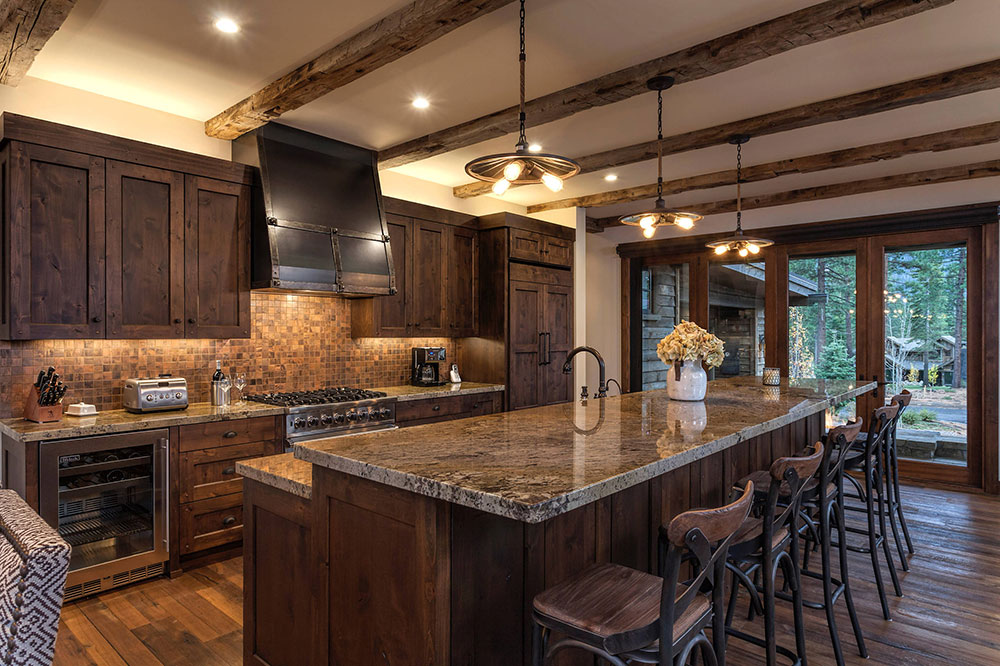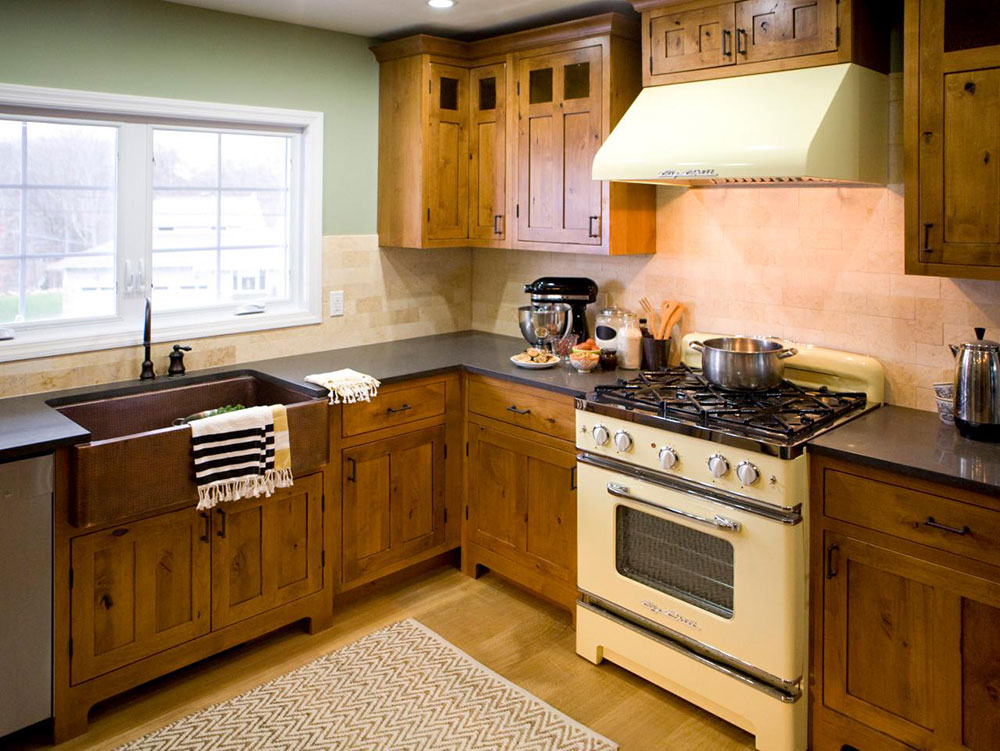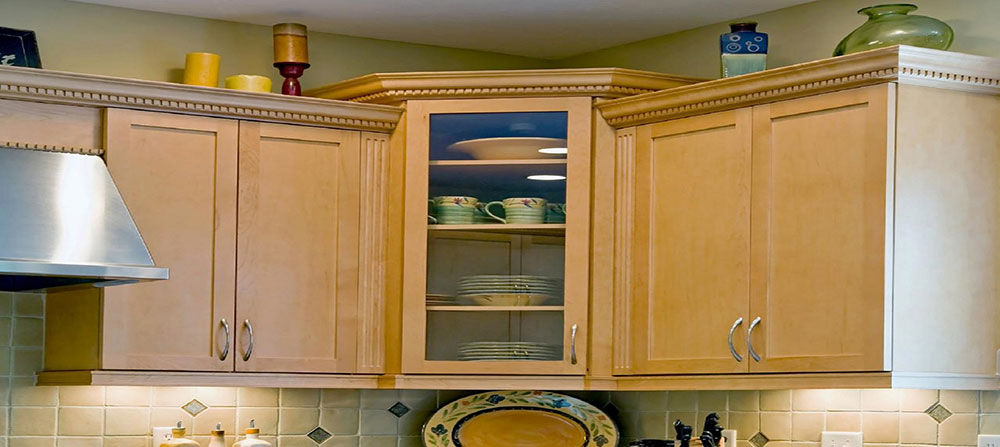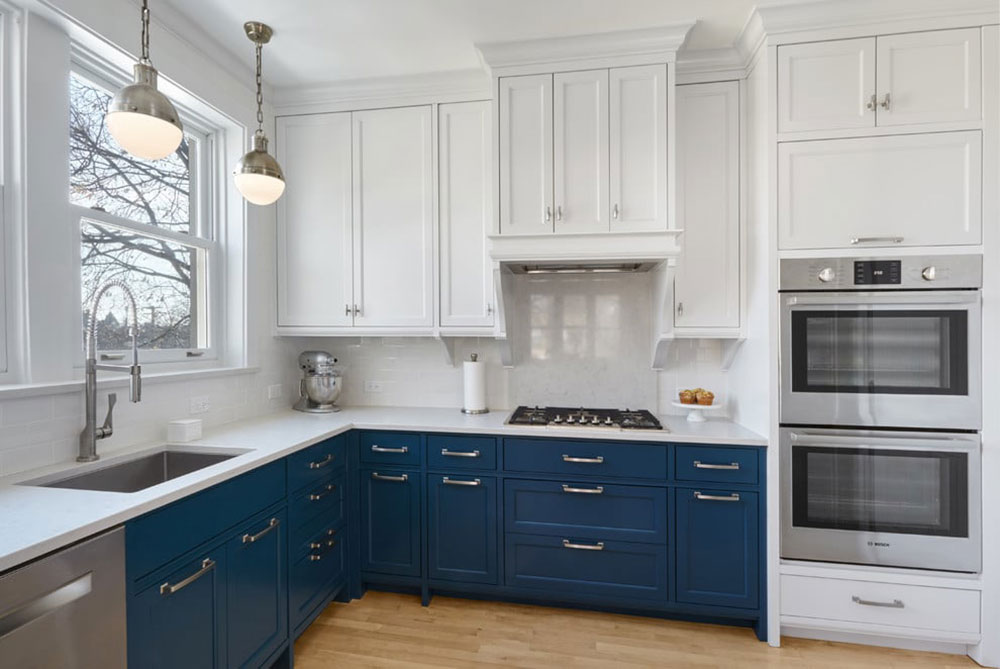Advertisement
When it comes to kitchen cabinets pricing, the calculation doesn’t always come easy. For some cabinets, you are expected to pay per component, while others are advertised as priced ‘per linear foot. And right when you come around a budget, the sales manager estimates a 10-by-10 foot kitchen, and you are completely confused. This is why it is important to understand what a linear foot is.
Learning how to calculate linear feet for kitchen cabinets is challenging. This is especially true for homeowners who have no similar experience, or who never had to deal with measuring tapes. And yet, linear footage is just as important for buying kitchen cabinets as square footage.
Let us help you with a few tips on how to measure linear feet for custom cabinets.
What is linear footage and why is it so important?
Linear feet refer to the straight-line measurements of the room’s edge. They are commonly referred to as figure perimeter and are measured in feet. The simplest way to understand them is to think of the overall length of a room on all sides.
The rule of thumb of retailers is that the linear foot of kitchen cabinets is 12 inches for the lower and the upper cabinets, but that is not always the case. This is why you shouldn’t rely on this belief, but rather calculate the linear foot of all cabinets separately. Once you have the exact measures, you can order the material for your custom cabinets.
Let us give you an example: You’ve measured the kitchen, and there are 15 feet of linear space you can use for kitchen cabinets. You go to the store, and the salesman tells you they offer 3-feet cabinets for $100 per piece. For you, this means that you can get 5 cabinets total (15/3) and that you need to pay $500.
How to Calculate Linear Feet for Kitchen Cabinets
You now understand what linear feet mean, and you can start hunting for the perfect custom cabinets. Make sure you always bring some paper and a pen with you, so that you can quickly sketch the design and keep an eye on the exact measurements.
Make a sketch
You don’t need to be an artist for this. Just sketch a rough drawing of the cabinets and take the walls into account. The scale doesn’t matter at this point, but try to add the appliances to the places you want them to be.
Base measurements on the wall sides
Measure the distance from the point where the cabinet would begin to the point where it would end.
For best results, measure along the wall sides and use a tape measure to ensure you have the correct dimension. Stay along the wall, as it is a linear feet calculation and not a square foot one. Note the dimensions down in inches. You can also make it easier for you by placing kitchen cabinets together – only sum up the measurements from one corner to the other.
Think of whether you need both lower and upper cabinets. If that is the case, measure linear feet for both sets of cabinets. The number may be different, so sketch both sets independently from each other.
Measure the additional walls
If you think of any random kitchen you’ve been to, it will come to your mind that most cabinetry layouts have an L shape. If you want this look for your kitchen too, you will need to measure the second wall as well. Begin from the corner to the end of the planned space, pretty much the way you did with the first wall.
If you are planning to install upper cabinets on this wall, measure both sets separately. Make the sketch as precise as possible.
Deduct the allowance
If you opted for an L-shaped kitchen, keep in mind that the cabinetry will overlap, and you need to allow that. Deduct the allowance at the point where both cabinets merge and overlap, at 90 degrees.
In most cases, you will need to deduct 12 inches for the upper cabinets and 24 inches for the lower ones. Still, measure precisely and note the allowance down.
Deduct the allowance for standing appliances
Your sketch should not only include the kitchen cabinets, but also the larger appliances you have. You need to have a plan of where you are going to place them so that you can subtract their length.
Most kitchen appliances have a standard length of 30 inches.
These are the appliances to consider:
- Refrigerator
- Oven
- Dishwasher
Remember that this is a rough measurement. For a more precise sketch, measure the appliances and calculate the space that you can subtract thanks to them. The same rule applies to windows and doors between the top set of cabinets.
Finalize the measures
All the measures to this point will be in inches, and you need to convert them into linear length. To do so, divide the full amount you have by 12 inches, and the result will be the total linear length of your upper and lower cabinets.
Imagine you have 10 linear feet – this means you will need 120 inches of cabinets to complete the kitchen. But remember – all of these measurements are valid as long as you subtract allowance and know where comes what.
Based on this explanation, an owner of a smaller kitchen can easily disqualify a standard 10 feet x 10 feet kitchen. The reason is that he would be buying 12 cabinets in total. Not even this is an actual rule, as the number also depends on the size and function of cabinets.
If you are having a hard time deciding how many cabinets you need based on the linear foot, think of your storage needs. The maximal utility is easy to achieve when you are well organized, and you don’t need a bunch of cabinets to make that happen. Sometimes, less is more!
Additional considerations
A linear foot is not necessarily a precise measure, but rather a rough estimate. It depends on a variety of factors, including the type and style of cabinets, and the form of the kitchen.
We would recommend thinking about what you need and how much space you have to make it happen, as this is the way to make the most of your kitchen space. As you calculate linear foot, take standards into account but don’t rely exclusively on them.
When we say standard, we mean lower cabinets that are 34 inches long, 24 inches deep, and 36 inches long. To this, you should add the countertop height of 1.5 feet.
Upper cabinets, on the other hand, are 12 inches deep and 36-42 inches tall.
To make the process even simpler, inform yourself of standard kitchen measurements. Most kitchens have 20 feet of wall space available and fall into the 10 x 10 pricing category. Retailers use this measurement method very often, as they try to explain which the most effective set of cabinets is. Depending on the linear feet, they will suggest cost-efficient base cabinets with two doors and no shelves.
More often than rare, the end price of the cabinets will be higher compared to your linear feet expectations. Some cabinet companies may even mislead you with linear foot prices if you are not sure what you need.
While measuring, stay flexible and take your style into account. It is still possible to have semi-custom cabinets tailored to your needs without breaking the bank. All you need is a basic understanding of how cabinets are measured.
As a reminder, cabinets often have standard sizes of 3 inches each. The longer ones with 9 inches are normally used for spice drawers and racks. Upon need, you can also order 12-inch cabinets, 15-inch cabinets, or even 18-inch cabinets.
Bonus tips to help you determine linear feet
Here are some hints to keep in mind for exact measurements
- If you want the measures to be accurate, use graph paper and tape.
- Before measuring linear feet, think of the size, shape, and style of your future cabinets. You will get a better visual idea of what you are looking for and how much such cabinets cost.
- Measure the overall widths and lengths only clockwise.
- Work with a tape measure instead of yardsticks or rulers. This way, you can adapt and accommodate your tool to any length.
- While measuring linear feet for the kitchen, plan with appliances in mind. They also need some space.
- Write everything down. It may seem that you won’t forget the measures, but you would be surprised how many mistakes happen this way.
- Measure twice, or three times if necessary. If you always get the same result, your notes and measures are correct.
FAQs about calculating linear feet for kitchen cabinets
1. What is the definition of linear feet for kitchen cabinets?
The length of cabinets or countertops in a straight line is measured in linear feet. The term “linear feet” in relation to kitchen cabinets describes the overall length of cabinets needed to finish a particular project.
2. How do you calculate linear feet for kitchen cabinets?
Measure the length of each cabinet, including the width, to determine how many linear feet there are in a set of kitchen cabinets. The total number of linear feet required for the project will then be calculated by adding the length measurements together.
3. Is there a difference between linear feet and square feet when measuring kitchen cabinets?
Yes, square feet refer to the size of a surface, whereas linear feet refer to the length of cabinets measured in a straight line. Kitchen cabinets are measured in linear feet to get the overall length needed, and in square feet to determine the total amount of countertop space necessary.
4. Can I use linear feet to estimate the cost of kitchen cabinets?
Yes, you can calculate the cost of kitchen cabinets in linear feet. A good unit of measurement for estimating project costs is the linear foot, which is how many cabinet makers and builders price cabinets.
5. How do you convert linear feet to standard cabinet sizes?
Divide the total linear feet by the typical length of a single cabinet to convert linear feet to conventional cabinet sizes. This will provide you with a rough idea of how many cabinets you’ll need to finish the project.
6. What is the average cost per linear foot for kitchen cabinets?
The level of customization needed and the quality of the materials used can have a significant impact on the average cost per linear foot for kitchen cabinets. Typically, the price of a basic set of cabinets ranges from $100 to $300 per linear foot, while the price of custom cabinets can reach $1,000 per linear foot.
7. How do you measure linear feet for corner cabinets or L-shaped kitchens?
Measure the length of each section of cabinets separately and put them together to get the total linear feet needed for corner cabinets or L-shaped kitchens. To calculate the total linear feet for corner cabinets, measure the length of each side of the cabinet and add the results.
8. What are the maximum linear feet for kitchen cabinets that can fit in a standard-size kitchen?
Depending on the design of the kitchen and the size of the cabinets, the maximum number of linear feet of kitchen cabinets that can fit in a standard-sized kitchen may change. A typical 10′ x 10′ kitchen can typically hold up to 20 linear feet of cabinetry.
9. How do you account for appliances or other fixtures when measuring linear feet for kitchen cabinets?
When calculating the required number of linear feet for kitchen cabinets, take into account appliances and other fixtures by measuring the width of each one and deducting it from the required number of cabinets. This will provide you with a precise calculation of the number of linear feet needed for the cabinets.
10. Do I need to include additional linear feet for overhead cabinets or pantry cabinets?
Yes, when determining the overall length of cabinets required for a project, overhead cabinets and pantry cabinets should be included in the linear feet measurement. These cabinets can significantly increase a kitchen’s storage capacity, therefore they should be taken into consideration when planning a renovation.
Final thoughts on how to calculate linear feet for kitchen cabinets
With this post, we tried to tackle one of the biggest problems of homeowners – how to calculate linear feet for kitchen cabinets. Now that you understood what linear feet measures mean to stock cabinets, you will also be able to plan the kitchen budget accordingly.
With this guide, you are one step closer to creating the perfect kitchen.
If you enjoyed reading this article about how to calculate linear feet for kitchen cabinets, we also wrote about subjects like how to style glass kitchen cabinets, why are kitchen cabinets so expensive, how to vent a kitchen sink under a window, and how to build an outdoor kitchen with pavers.
That is not all. We have other kitchen related articles on how to remove rust from kitchen utensils, how to fix a gurgling kitchen sink, how to pack kitchen appliances, how to clean gunk out of kitchen sink drain, and how to cover kitchen cabinets without painting.






